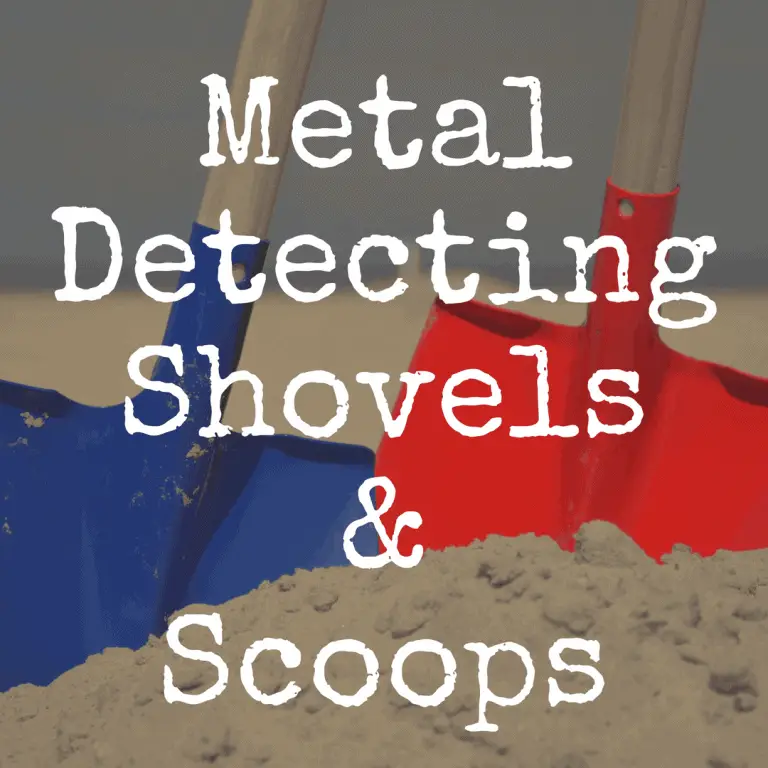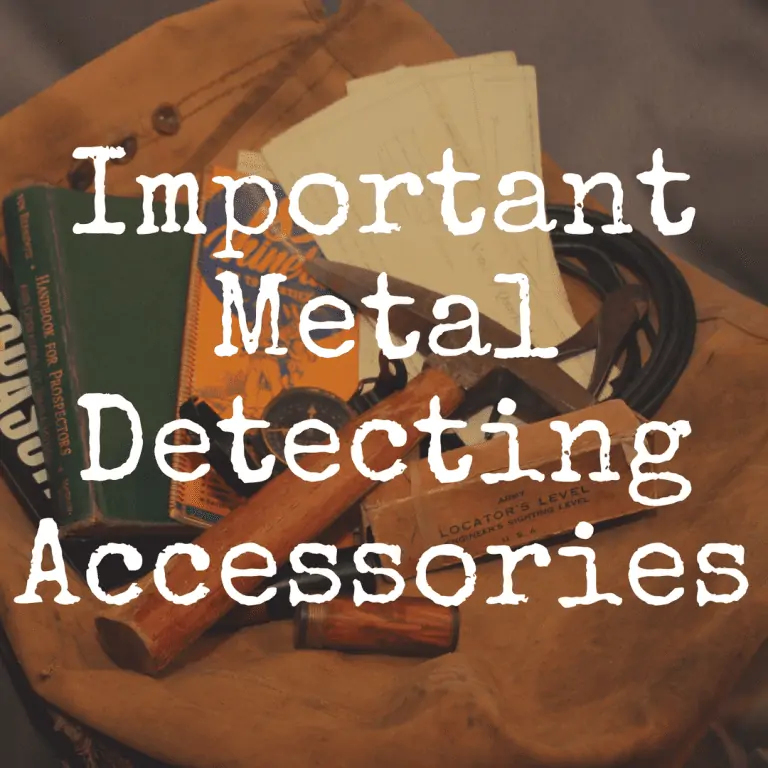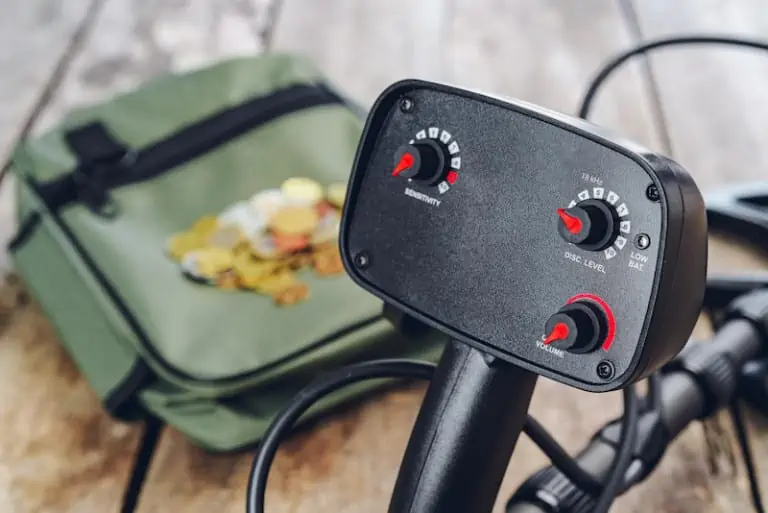25 Tips for Using Metal Detecting Pinpointers

Pinpointers can be a great investment for all skill level metal detectorists. I used to think these were not worth the cost as they do the same basic thing a traditional metal detector does. So why bother with another piece of equipment, right?
This article will show you some of the benefits of having a handheld pinpointer, and some tips for getting the most out of a pinpointer. And to better help you, please use the interactive guide below to view some of the best pinpoints available on today’s market.
| Photo | Model | Price |
|---|---|---|
| Garrett Pro-Pointer AT | $$$ | |
 | Fisher Pinpointer | $$ |
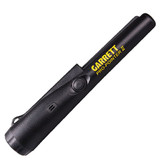 | Garrett Pro-Pointer II | $$$ |
1. What is a Pinpointer?
A pinpointer is basically a handheld metal detector. It is much smaller and easier to use than a traditional metal detector. Not to say you should only use a pinpointer. They are best used in conjunction with a full-sized metal detector. The tip of these tools contains a miniature metal detector coil.
When it is near a metal object, it will produce a sound or vibration or both (depending upon the model). The closer the detectorist gets to the target, the more continuous the sound or vibration will be. This is how they help guide you to the treasure! There are a variety of metal detecting pinpointers out there with a variety of features.
2. Do I Need a Pinpointer?
While they are not a necessity, it is always a good idea to take along a pinpointer when metal detecting. There are multiple reasons (discussed below) why they are a handy tool to add to your metal detecting arsenal. I personally would recommend a pinpointer to all detectorists, regardless of skill and experience level. They really do come in extremely handy and can save you time and energy.
3. There are Many Pinpointers to Choose From
Almost all metal detector manufacturers also make handheld pinpointers. These are not typically included in the purchase price of a metal detector and must be purchased separately. Garrett, Fisher Labs, XP, Tesoro, Nokta Makro, and White’s are just some of the companies that produce handheld pinpointers.
Each pinpointer also has its pros and cons, and you should always do your research to ensure you get exactly what you are looking for. There are many handheld pinpointers that are cheaper, so there is no reason not to try one!
4. Why do I need a pinpointer?
Several metal detectors come with built-in pinpoint mode. This is typically a non-motion, all-metal mode. Each metal detector’s instruction manual will include a how-to guide on how this function works. It works like a handheld pinpointer, but you do not have to switch gear. Typically, the pinpoint function requires the detectorist to hold the detector parallel to the suspected target above the ground.
Slowly sweeping the machine will narrow the audio response until the target area is smaller than the initial search area. This means you will not have to dig as much as if you did not use pinpoint mode. Garrett’s AT line, Minelab Vanquish 440 and Minelab Vanquish 540, and the Fisher F22 and Fisher F44 are just some of the great metal detectors with this feature. Despite this, you still must dig a larger hole than you would with a handheld pinpointer. It really comes down to preference.
5. Zero in on Targets Easily
While some metal detectors come with pinpoint mode, a handheld pinpointer is often easier to use and more precise. This will help you zero in on your target more directly. Even the smallest search coil will not zero in on a buried target as well as a handheld pinpointer. This will save you time, energy, and frustration. It can be irritating to dig and dig only to find the target was no in the area you were digging, despite your metal detector giving a signal.
A handheld pinpointer is more accurate when pointing to a target. Some highly mineralized soils will make a standard metal detector give false readings. Sometimes it is difficult to zero in on the target in difficult soils, and a handheld pinpointer can help you zero in more accurately and quicker on your targets.
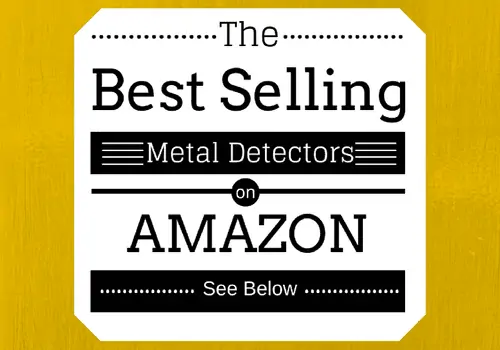
Below, please check out some of the best selling metal detectors on Amazon:
| BEST SELLERS |
|---|
| 1) Garrett AT MAX |
| 2) Bounty Hunter TK4 Tracker IV |
| 3) Bounty Hunter Gold Digger |
6. Dig Less
Because the handheld pinpointer will help you narrow down your search area quicker, you will not have to dig as much as if you were using your regular metal detector. The pinpointer has already zeroed in on the target, and you will dig only where the pinpointer has indicated.
The search coil on a regular detector will zero in on a target area, but the readings will not be as precise as with the handheld metal detector. You will innately dig less while using a handheld pinpointer. It can be hard on your back and knees when digging large holes, or constantly bending over.
7. Dig Easier in Compact Soils
Have you ever been metal detecting in an area with highly compact soil, or high clay content? It can be a real pain to dig a target, even with quality shovels. Using a handheld pinpointer means you will have to dig less, and as such, you will have an easier time in difficult soil conditions. Your back and knees will be appreciative if you do not have to spend so much time hunched over and digging.
8. Quicker Recovery Times
Because you will be digging less, you will have quicker recovery time. This means you will be able to hunt more because you are not spending as much time digging each target. Once you have dug some soil out, you can quickly and easily check the removed soil and hole with your pinpointer. You will be able to search longer, faster, and further when you use a pinpointer to aid in your target recovery.
9. Less Damage to the Environment
If you are digging less, you are not damaging the environment as much as if you dig large holes. While most metal detectorists are particularly good about filling in any holes they have dug, there is a possibility that you can damage the environment by digging up the soil. Using a pinpointer will make the location of your target a narrower area, and thus you will have to dig less which damages the environment less.
10. You Will Not Damage Manicured Areas as Much
People may be hesitant to let you metal detect on their property if it is manicured. If you can show them how you dig smaller plugs because you use a pinpointer, they may be more willing to let you dig into their lawn. This comes in handy when metal detecting in older home areas, near buildings, and in parks.
Digging a plug allows you to put the plug back easily and quickly with minimal to no damage. Your city’s 100-year-old library or park managers will be highly appreciative and more likely to let you, and other detectorists, hunt on the property if they see how respectful you are when digging.
11. Less Damage to Recovered Items
If you have not successfully narrowed town your target area, you may end up digging too close to your target item. This can lead to damage of the recovered items. You may ding an old coin with your shovel or hand trowel or put a dent or scratch in valuable relics. Not only does this diminish their value, but it is a shame to cause damage to a historical artifact!
12. Be Sure to Get Quality Accessories
A good quality recovery tool and holster are great accessories to go with your new pinpointer. You should always ensure you take along a quality digging tool. You will not regret it! It is incredibly frustrating to be far away from home and have your discount shovel or hand trowel break.
It may cost a little more, but it is worth the extra cash to make sure you have something you can trust. A holster is very handy to have with your pinpointer. Most holsters will attach to your belt or pocket. This will keep the pinpointer in reach all the time and keep it safe while you are not using it.
13. You Don’t Have to Spend a Fortune
As mentioned earlier, most metal detector manufacturers make pinpointers. Because of this, they come a variety of prices. You do not have to purchase the most expensive unit. All pinpointers will find metal. More expensive models will have added features and may be more accurate than lower priced or off brand pinpointers.
For example, Garrett’s pinpointers range from $130 to $170. These pinpointers are some of the best on the market, and include the Garrett Pinpointer Pro. They feature vibration alert, LED flashlights, are very lightweight (just 6.5 ounces), and operate on one 9-volt battery. The higher end pinpointer even has wireless technology, so it can be used with headphones.
Deteknix XPointer is a less expensive pinpointer with many features of the more expensive units. It is not waterproof, but is a good pinpointer, especially for the price. Lower end pinpointer are more prone to false signals and overloads, so do your research when purchasing!
14. Always Bring Extra Batteries
Most pinpointers operate on battery, so it is important to make sure you always take along extra batteries when hunting. It is frustrating when your equipment stops working in the middle of a hunt, especially if you are far from home or the store. Bringing extra batteries ensure you do not have to deal with this issue. I always take extra batteries for my metal detector and my pinpointer.
15. Pinpointers Make Finding Difficult Targets Easier
Some objects detectorists are after, like small, hammered coins, are difficult to distinguish when caked with soil. Using a pinpointer will help you find difficult to see targets, even in poor light conditions (inside of a dug hole, in dark soil, or in dim lighting). Many models of pinpointer come with a built-in flashlight to illuminate your work area and again, makes it easier to see your targets.
16. Rocky & Rooted Soils are No Problem!
With a handheld pinpointer, rocky and root heavy soils are no longer a problem. While neither rocks nor roots will hinder your regular metal detector much, they are sure a pain to dig into, especially if you do not have an exact location. Once you find a target signal with your metal detector, you can dig a small area and use your pinpointer. This way you can focus on just one small area, and only the rocks and/or roots in that area, rather than digging a large hole full of rocks and roots.
17. Coin Shooting is Easier
Coin shooting is made easier with the help of a pinpointer. Many coins are small, can be turned sideways, and are caked with dirt or soil or covered by rocks or roots. Traditional metal detectors may read these incorrectly because they are so covered in soil or turned sideways, making them seem very thin. Most metal detectors read the size and type of metal but can give false readings when the item is turned a certain way.
I found a coin in a 6-inch-deep hole that was so caked with highly mineralized dirt my detector kept giving different readings. I decided to dig the hole anyway and used my pinpointer. It was difficult to find the coin. I kept picking up the dirt and scanning it with the pointer. Even when it would vibrate, I could not see the coin. Eventually, I found it. It was a coin that would have been missed if not for the pinpointer. A pinpointer is a great option for those interested in coin shooting.
18. Pinpointers Make Double Checking Holes Easier
It is always recommended to recheck holes you have dug after finding a target. If you are coin shooting, there is a possibility that several coins will be found together. Using a handheld pinpointer can make rechecking the holes easier. You can also check the dirt or grass plug you removed easily with your handheld pinpointer.
I like to take along a rubber or plastic frisbee when digging in grassy areas. This makes keeping the entire plug together so it can be replaced perfectly and makes checking the plug before you put it back easy with your pinpointer.
19. Pinpointers Can Help You Save Energy
It can be exhausting digging large holes, especially in difficult soil conditions. Narrowing down your search area with a metal detector and a handheld pinpointer helps you save time and energy when hunting so you can search longer and cover more ground. Having a better idea of where your target is located means you will spend less energy squatting and digging to find it.
Constantly squatting and digging are what will wear you out the quickest when metal detecting, especially if the ground you are searching in has a lot of rocks, clay, or roots.
20. Pinpointers are Simple to Use
Pinpointers do not have nearly the settings that a full-sized metal detector would. Most are just turn on and go type detectors. They do not have to be tuned or ground balanced. They are completely computerized. Some models even come with LED lights, as mentioned above, to help you in low light conditions. Higher end pinpointers will come with adjustable settings, but the bulk of pinpointers are simple to use and you will not have to do any adjustments.
21.Let Your Kids Use a Pinpointer
My family likes to metal detect together. Our youngest son gets a kick out of overseeing the pinpointer. It is a fun way to get your kids involved in metal detecting. My son feels important when he has a job to do, like running the pinpointer. Neither of my kids were interested in metal detecting until we gave them the pinpointers to run. Now they are both more involved and have more fun. Pinpointers are simple to use, as I mentioned above, and the kiddos do very well with these simple yet effective devices.
22. Some Pinpointers Have Discrimination and Sensitivity
The majority of pinpointers do not have discrimination settings; they are merely all-metal detectors. The Minelab Profind 35 is the only handheld pinpointer I have seen with discrimination settings. This handheld detector can discriminate ferrous targets, so you can find only desirable targets.
It is possible in the future we could see more pinpointers with discrimination options. Some higher end pinpointers also have sensitivity settings. These settings are like those on your metal detector. This will allow you to adjust sensitivity which will increase the depth. It can also help detect targets within the walls of your target hole, rather than at the bottom.
23. Most Pinpointers are Ruggedly Designed
Almost all handheld pinpointers are ruggedly designed so they can withstand quite a lot without damaging them. This is comforting to know when you are rummaging through loose soils, rocky ground, river bottoms, or surface rocks. With normal wear and tear, a pinpointer can last an exceptionally long time.
Makro’s pinpointer comes with 2 replaceable hard-shell cases. It is like a coil cover for your pinpointer. Even models that do not come with replaceable cases will take quite a beating without affecting their performance (within reason, of course).
24. You Can Detect in Water With Some Pinpointers
A lot of metal detecting pinpointers are fully waterproof. They can be submerged up to a certain depth, which varies by manufacturer. This makes it easier to detect in and around rivers, on beaches, in shallow lakes and swimming holes, and streams. There are even pinpointers made for deep sea diving, so you can use it 200 feet underwater! Most people will not need one that can be submerged to this depth unless you are scuba diving, or shipwreck diving. Regardless, there is a lot of treasure in rivers, streams, and lakes.
So, it is nice to have a waterproof pinpointer when searching these areas. Think of all the recreating people do in these areas. Wherever people recreate, they lose items. You will find countless treasures in these areas and your pinpointer will help you do this quickly and easily. Do your research if you are looking for a waterproof pinpointer and find one that corresponds to the depths you will be searching in.
25. Experienced Metal Detectorists Use Pinpointers
When first starting out as a detectorist, it is normal to use as little equipment as possible until you learn more about the craft. Many start out with just a detector and a shovel. This is all fine and good. But as you progress as a detectorist, you realize that you can make it easier on yourself and find more treasures quicker if you use a pinpointer.
If you are new to detecting, or do not think you would like to have a pinpointer, borrow one from another detectorist or purchase a cheaper pinpointer. This way you can see what all the fuss is about. I can confidently say you will not be disappointed if you use a pinpointer.
Conclusion
As you can see, there are many reasons to invest in a good quality handheld pinpointer. They come in handy when digging in difficult soils, help you save your energy and time, speed up recovery times, and are extremely easy to use. I honestly did not see the benefits of having a pinpointer when I first started metal detecting. I did not consider them a necessary tool of the trade. My metal detector was always good at finding targets, but then I watched some videos of professional detectorists using pinpointers. So, I decided to try one. After I used one, I will never go back to metal detecting without one!
Using a pinpointer also reduces your impact on the environment and may open metal detecting opportunities in areas that have manicured lawns. People will be more willing to let you search on their property if you are respectful and do not do damage. They are a great investment for beginners or advanced detectorists, and some models are even designed for deep sea diving.
Do some research on the best pinpoint metal detectors and find one that will help you in your searches! There are thousands of helpful videos reviewing metal detector pinpointers out there. Hope on YouTube and search away!
- If you enjoyed this article, please “like” our Facebook page!



